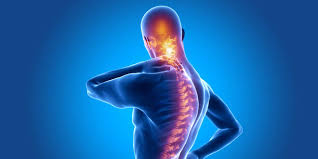
Ankylosing Spondylitis Definition
Ankylosing spondylitis is a type of arthritis of the spine. Ankylosing spondylitis is also known as Marie-Strumpell disease or Bechterew’s disease. It’s a form of inflammatory arthritis that primarily affects the spine. After several years, the bones in the spine, called vertebrae, may fuse together. When this happens, the spine becomes stiff and less flexible.
This condition often develops in the sacroiliac joints, which connect the lower spine to the pelvic bones. It can also develop in other parts of the spine.
Possible Ankylosing Spondylitis Causes
-
Gender: Ankylosing spondylitis is more common and more severe in men.
-
Family history
-
Human leukocyte antigen B27
Ankylosing Spondylitis Symptoms
The most common manifestation of ankylosing spondylitis is inflammatory back pain. back pain is often nocturnal and recurs with varying intensity.
The main symptoms of AS affect the spine and lower back, causing:
-
Stiffness
-
Pain
-
A loss of mobility
Other early symptoms and signs are diminished chest expansion from diffuse costovertebral involvement, low-grade fever, fatigue, anorexia, weight loss, and anemia.
Ankylosing Spondylitis Diagnoses
Since symptoms often come on slowly and can resemble those of other conditions, it frequently takes years for AS to be diagnosed correctly. The doctor will use a combination of methods to pinpoint AS and rule out other conditions, called a differential diagnosis. These methods may include the following.
-
Physical exam:
A physical examination entails looking for sites of inflammation. Thus, your doctor will likely check for pain and tenderness along the back, pelvic bones, sacroiliac joints, chest, and heels. During the exam, your doctor may also check for limitations in spinal mobility in all directions and for any restriction of chest expansion.
-
Medical history
-
Blood work and the HLA-B27 Test
-
Lumbosacral spine and sacroiliac joint radiography
Ankylosing Spondylitis Treatment
-
Medications: include pain relievers, NSAIDs, corticosteroids, DMARDs
-
Exercise: it can be used not only to relieve pain, but also is important for keeping your spine mobile and flexible. Exercises performed in warm water can also be helpful.
-
Manage your stress
-
Quit smoking: Not only is smoking a risk factor for AS, but also it can worsen your disease and reduce the effectiveness of treatment.
-
Diet Therapy for Ankylosing Spondylitis:
-
people with spondylitis are already at higher risk for osteoporosis: Following a diet with adequate amounts of calcium and vitamin D will help reduce the risk of osteoporosis.
-
Eat a healthy diet to control ankylosing spondylitis symptoms: The best spondylitis diet is the same diet that is good for maintaining a healthy weight and keeping your whole body in a good shape.
-
choosing foods that help fight inflammation and keep your heart healthy.
-
Maintaining a Healthy Weight: Carrying too much weight will put extra strain on inflamed joints in your back, hips, and knees.
Some points about nutrition in Ankylosing Spondylitis
-
Eating fruits and vegetables
-
Eating whole grain
-
Drink plenty of fluid
-
Consuming omega-3 fatty acids which are found in cold water fish or fish oil supplements.
-
Avoiding high-fat, high cholesterol foods
Some foods that trigger inflammation may include
-
Sugar
-
Salt and high-sodium foods
-
Red meat
-
High-fat foods
-
Starch
-
Wheat and gluten
-
Alcohol




